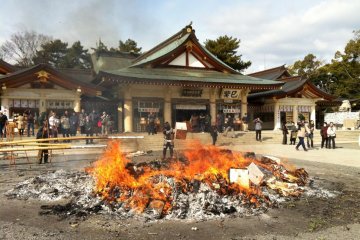
Tondo Festival 2026
Emmie TsumuraAnnual festival held around January 15th all across the country to burn old talismans and charms and pray for good luck in the year to come.

Located on the grounds of Hiroshima Castle, Hiroshima Gokoku Jinja (広島護国神社) is a Japanese Shinto Shrine in central Hiroshima City.
"Gokoku" Shrines are Shinto shrines designated as places of worship for those who have died in war. Like the controversial Yasukuni Shrine in Tokyo, what became Hiroshima's Gokoku Shrine was also originally constructed in 1868 to commemorate the Hiroshima Han victims of the Boshin War. Seventy-eight souls were enshrined in the Futabanosato shrine, named Mikureisha (水草霊社).
Eventually, the total number of souls enshrined there reached 92,700, including the soldiers from the former Aki no kuni (now western Hiroshima Prefecture) who died in Japan's wars up until the start of the Great East Asian War (as World War 2 post Pearl Harbor is known in Japan) and around 10,000 workers and volunteer corps who were stationed in Hiroshima and lost their lives to the A-Bomb.
In 1934 it was dismantled, rebuilt and renamed Kansaishoukonsha (官祭商塊社), and moved to a corner of the west of the military parade ground, where the Hiroshima Municipal Baseball Stadium stood until the end of 2008. In 1939, its name was changed by order of the Interior Ministry to the Hiroshima Gokokujinja. In 1945 it was destroyed by the atomic bomb, and was rebuilt on the current site within the grounds of Hiroshima Castle in 1956 with the aid of donations from the citizens of Hiroshima.
The current main building is even more recent, rebuilt in 1995, when the grand stone slab approach was also added.
Events at the shrine are held throughout the year.
Gokoku Shrine can be found within the main castle grounds of Hiroshima Castle.
By train/streetcar: Hiroshima Castle is about a 10-minute walk north from the downtown area, including Kencho-Mae Station (Astram Line) or Kamiyacho-higashi stop (Hiroden streetcar).
Meipuru-pu: sightseeing bus The castle is also on the route for the Hiroshima sightseeing loop bus, Meipuru-pu, which starts from Hiroshima Station. The castle is a 6 minute ride and the second stop on the route.
By foot: The castle is about 10-15 minutes walk from both Peace Park and Shukkeien Garden. By foot, it can form part of an ideal day itinerary.

Annual festival held around January 15th all across the country to burn old talismans and charms and pray for good luck in the year to come.
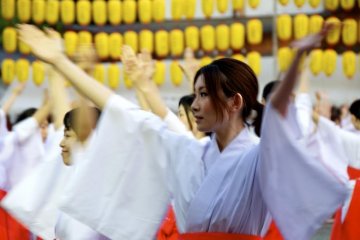
Once a year, the spectacle of 100 shrine maidens dancing by lantern light can be seen in the forecourt of Hirohima Gokoku-jinja Shrine.
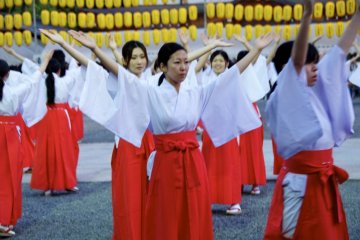
100 "miko" shrine maidens dance by lantern light on the first night of the Mantou Mitama Matsuri at Hiroshima Gokoku-jinja Shrine.

Annual festival held around January 15th all across the country to burn old talismans and charms and pray for good luck in the year to come.
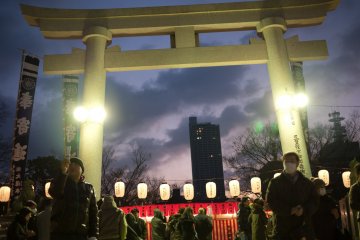
Gokoku-jinja is a large shrine next to the Hiroshima castle often bustling with activity.
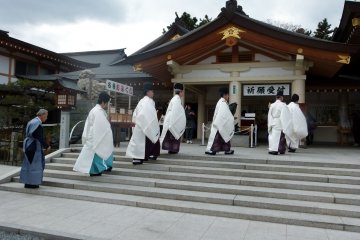
Setsubun traditions, archery and lucky bean toss event at Hiroshima's Gokoku-jinja annually on Feb 3rd
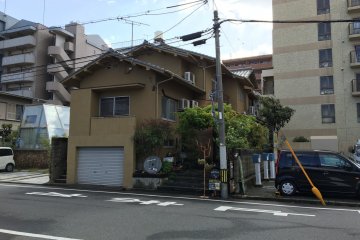
Why Guest House Roku in Hiroshima is a great place for budget travelers looking to make friends
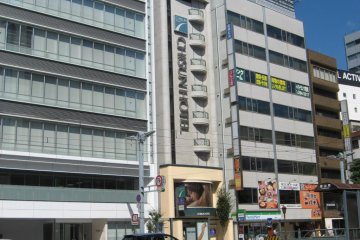
Chisun Hotel Hiroshima, centrally located in the downtown area, is a great place to stay if you're planning a visit to this world famous city.
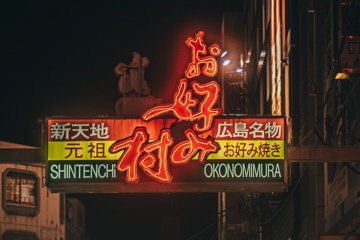
Okonomimura is a Hiroshima-style okonomiyaki theme park located in Shintenchi, Naka-ku, Hiroshima, near the east end of the Hondori shopping street. It has 24 okonomiyaki restaurants, each with a slightly different style and one different selection of ingredients. Okonomiyaki began in the pre-war period as a dish called "Issen Yoshoku" ("" Western food for a dime ""), which was very popular with common people. It consisted of a flour paste cooked with onions, dried shrimp, and spices. After the war, other ingredients such as cabbage, eggs, seafood, buckwheat and wheat noodles were used to improve the diet in these tough times. This is how today's Hiroshima-style okonomiyaki came about. [Photo: Victor Lee / CC BY-NC-ND 2.0]
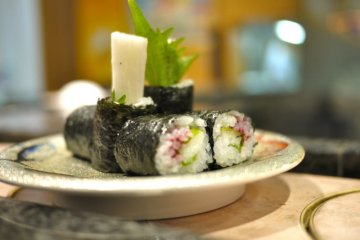
Centrally located conveyor belt sushi restaurant serving quality fish and seafood direct from a local market at reasonable prices.

If you like Japanese dishes and love your vegetables, you will enjoy a meal at NonoBudou 野の葡萄 "Natural Garden Terrace"
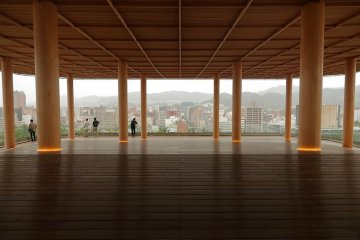
With its beautiful skylines and active waterways, Oizuru Tower offers its visitors a way to see all of that activity—day or night—unobstructed by glass or rails. The wooden floors and ceilings give off a gentle warmth and the pillars that support the ceilings also provide beams of light. Instead of glass or railings, guests can feel the Hiroshima air wash over them thanks to the stainless-steel net fence. With unobstructed views of Hiroshima, including the Peace Memorial Park and the Atomic Bomb Dome (and even Mount Misen of Miyajima on clear days), the tower offers viewers a way to feel at one with the city. Hiroshima Oizuru Tower is also home to an assortment of shops and cafés. Visit the first floor to find that special souvenir of one of Hiroshima’s local products at Hito to Ki. You’ll also find Hiroshima-style okonomiyaki in Akushu Café—including unique wrap-style okonomiyaki. On the 12th floor, you can also fold your own origami crane and leave it on the Oizuru Wall with your well wishes for the future. From the 12th floor to the 1st floor, there is a slide “cool-cool-cool” that runs alongside the spiral staircase. Why not try sliding your way down twelve floors—or just a couple, as you can exit in between floors. While you take a walk inside, browse the original comic created by Shuho Sato—manga artist of “Umizaru” and “Say Hello to Black Jack”—the works inside Oizuru Tower reflect on the theme of peace. No matter what you decide to do, you’ll be delighted by the spaces and experiences that you can create. Discover the past, present, and future of Hiroshima while you gaze out at this bustling city.

The Atomic Bomb Dome, or Gembaku Dome, was once the Hiroshima Prefectural Industrial Promotion Hall. On August 6th, 1945, the world’s first atomic bomb exploded in the air directly over the building. The Hiroshima Prefectural Industrial Promotional Hall was initially built in 1915. Designed by Czech architect Jan Letzel, the building featured European construction styles and was considered both a picturesque and important site in Hiroshima city. When the atomic bomb exploded directly overhead at 8:15am on August 6th, the resulting nuclear blast killed everyone within the building itself and in the immediate vicinity. The roof was set ablaze and the walls were destroyed but the metal frame of the building was mostly left intact. In the post-war years, the hall became known colloquially as the Atomic Dome. Several renovations have been carried out on the remains over the decades, mostly to counteract severe weathering. In 1996, the dome was registered as a UNESCO World Heritage Site. Today, the A-Bomb Dome sits at the northern end of the Hiroshima Peace Memorial Park, a short walk from the Gembaku Dome tram stop (Gembaku-mae) and the city’s central shopping arcades. In the evening, muted lighting illuminates the dome. It presents a striking scene of sadness and loss but also perseverance and hope.

Shukkeien Garden, located in central Hiroshima City, is a traditional Japanese-style garden loved by visitors and locals alike. This natural oasis among urban life provides a wonderful setting to slow down and rejuvenate among nature. Shukkeien Garden was completed in 1620 as a private garden for one of Hiroshima’s feudal lords (daimyo) and translates to “shrunken scenery garden” in Japanese. Although the garden was severely damaged in 1945 during WWII, it was completely restored to its former grandeur and is known as a National Place of Scenic Beauty. The Edo-period garden is cleverly landscaped to look like miniature mountains, valleys, rivers, bamboo groves, waterfalls, and forests. In the center of the garden, a carp-filled lake features multiple pockets of land that resemble islands. Plants pruned to look like tiny trees sprout from these islands and decorate the surrounding grounds. The pond’s stillness creates a mesmerizing reflection of the area’s natural hues and organic forms. The scenery shines brightest in springtime when the cherry blossoms are in full bloom, and in autumn when the foliage turns vibrant. The garden also has a small stone statue on its northern side to commemorate the people lost during the atomic bombing in 1945. You can view the expertly crafted scenery from a path around the perimeter of the park or in one of the garden’s many tea houses, which hold tea ceremonies year-round.